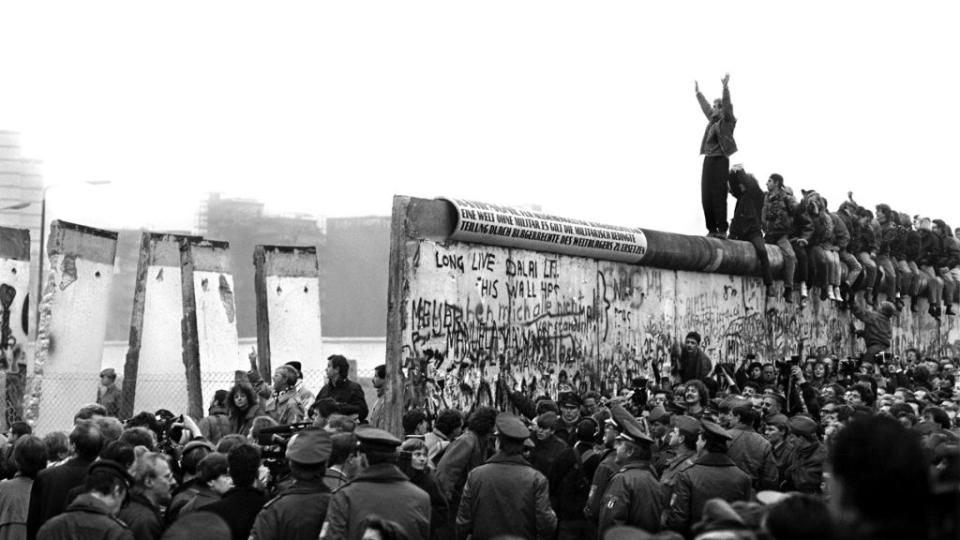The contradictory power of walls, in pictures

The idea of a wall, in our current political moment, can mean different things to different people.
As imagined by Donald Trump, a wall is the best way to keep unwanted immigrants out of the US. Yet a wall can also provide a gathering place. After Trump’s 2016 election, New Yorkers slapped thousands of Post-it notes on a bare wall at the Union Square subway station, sharing their hopes and fears.
An upcoming photography exhibition in Los Angeles is trying to unpack walls’ many meanings—and the power they represent for the people they sometimes surround.
W|ALLS: Defend, Divide, and the Divine at Annenberg Space for Photography uses images from photojournalists and artists around the world to “encourage visitors to explore the complex and multifaceted use of walls and challenge preconceived notions of why we build them.”
Many images focus on walls that separate people and on the political movements that create or destroy structures: Ethnic Albanian refugees passing a baby through a barbed wire fence, East and West Germans meeting at the crumbling Berlin Wall, or Indian security forces on camelback patrolling a large fence on the disputed border with Pakistan.

Agim Shala, 2 years old, is passed thru the barbed wire fence at a refugee camp as members of the Shala family are reunited after fleeing Kosovo, in 1989. The relatives who just arrived from Prizren had to stay outside the camp until shelter was available.
Others focus on the power of walls to provide protection or foster community, like a picture taken by photojournalist Ami Vitale of a thousand-year-old communal well in Jaipur, India. A note from the museum explains:
“Ripple Effect” is the title both of this image and a public awareness campaign Vitale spearheaded to address how to uplift societies by uplifting women. The phrase finds a perfect metaphor in this image: two women in a serrated setting, enclosed and elevated by the architecture surrounding them, the well and the women, both providing life and sustenance.
Here are a few selections from the show, with captions provided from the museum.

An image from performance artist Marina Abramovic’s “The Lovers” piece, in which she and her partner Ulay walked along the Great Wall of China from opposite ends, planning to meet in the middle. When they originally conceived of the project, they planned to meet in the middle and marry. But by the time they were able to actually complete the walk, their relationship had fallen apart. When they met on the wall, they broke up.

Jasmin (wearing red) and Manisha Singh (white and blue sari) pose at the Baoli at Amer, a water well in the city of Japiur in India’s Rajasthan Thar desert.

Teen boys playing basketball at the Youth Study Center juvenile detention facility in New Orleans, Louisiana in 2004

Bangladesh and India share the fifth-longest border in the world and since 1993, India has fortified this border with walls, barbed wire, and military force. However, migrant workers and illegal trade still pass across the border daily, even though severe punishment and death occur constantly—both for Bangladeshi illegally crossing and for Indians harboring the migrants.

For almost a century, Indian Border Security Force officers on camelback have patrolled the disputed border with Pakistan. In the 1990s, India began to construct the Indian Line of Control fence; when it was completed in late 2004, it covered 340 miles of the 450-mile border. Officers continue their patrol behind the barrier.
Sign up for the Quartz Daily Brief, our free daily newsletter with the world’s most important and interesting news.
More stories from Quartz:
